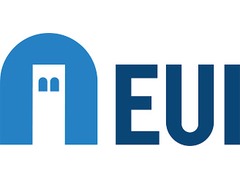European University Institute
Documents from [1948] to [2015]Identity Statement
2259 dossiers
Meyer, Ruth Ingeborg
Context
The EUI was born out of an atmosphere of cooperation, with notable advocacy for a European institute at the Hague Conference in 1948 and the European Cultural Conference the following year.
Other priorities persisted however until the 1955 Messina Conference; a series of constructive talks responding to the widening of Europe. With all six members of the European Coal and Steel Community (ECSC) were present, the German Secretary of State Walter Hallstein took the opportunity to call for a training centre for nuclear sciences. This was proposed under the Euratom Treaty which had established Europe’s atomic energy community; Hallstein’s vision would create an instrument of integration and move away from the nationalism of the past.
The Italian government was enthusiastic and, recognising an academic need to study Europe, made determined action along with the European Commission and the European Parliament. However it was not until over a decade later that the idea began to bear fruit, when in 1969 leaders met in The Hague and resolved to fund a European University Institute (EUI) in Florence. By this point the idea had evolved from a centre for nuclear sciences to one focused on the human sciences, promoting a cultural exchange between member states.
Plans were put into motion with conferences in Florence and Rome in 1970 and 1971, when it was decided that the Institute would be reserved for post-graduate studies and not directly a Community institution.
The six member states – Belgium, France, Germany, Italy, Luxembourg and the Netherlands – signed a convention in 1972 which cemented their commitment to creating the EUI as a pillar for research and development. The following year Denmark, Ireland and the United Kingdom joined the Community and became involved in founding the Institution.
The EUI opened its doors to its first 70 researchers in 1976. Over nearly 40 years the Institute has grown to incorporate academics from across the globe, spanning borders and staying true to its mission laid down in the 1970s: To "foster the advancement of learning in fields which are of particular interest for the development of Europe".
Reflecting the growth of the European Union, the Institute now has 20 member states: Austria, Belgium, Cyprus, Denmark, Estonia, Finland, France, Germany, Greece, Ireland, Italy, Latvia, Luxembourg, the Netherlands, Poland, Portugal, Slovenia, Spain, Sweden and the United Kingdom.
Conditions of Access and Use
The documents of the fonds are open for consultation 30 years after their creation.
June 2013, Ruth Meyer-Belardini
Allied Materials
Notes
Decision No. 7/1995 of the High Council of 14/12/1995 and President's Decision No. 12/2002 of 03/06/2002
